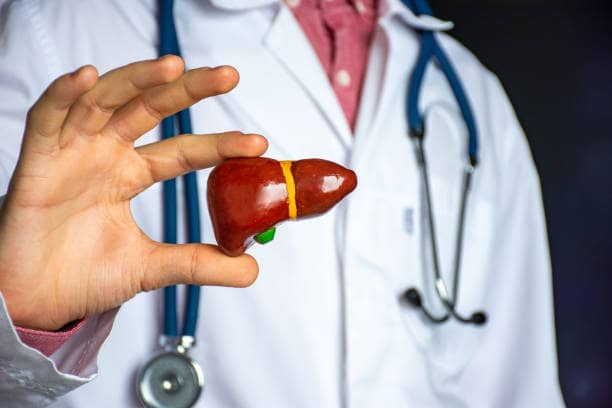What are the Symptoms of Chlamydia: Chlamydia is a common sexually transmitted infection (STI) caused by the bacterium Chlamydia trachomatis. It is one of the most prevalent STIs globally, affecting both men and women. The insidious nature of chlamydia lies in its often asymptomatic presentation, which can lead to severe health complications if left untreated. In this comprehensive guide, we will explore the symptoms of chlamydia and the various treatment options available.
I. Chlamydia Symptoms:
- Asymptomatic Infection:
Chlamydia is often referred to as a “silent” infection because it frequently presents without any noticeable symptoms. In fact, up to 70% of infected individuals may not experience any symptoms at all. This makes regular screening and testing crucial for early detection and treatment.

- Symptoms in Women:
a. Abnormal Vaginal Discharge: Some women with chlamydia may experience a change in their vaginal discharge, which can be watery or thicker than usual.
b. Pain or Burning Sensation During Urination: Chlamydia can cause discomfort or a burning sensation when urinating, similar to a urinary tract infection (UTI).
c. Pelvic Pain: In some cases, chlamydia can lead to pelvic inflammatory disease (PID), which causes lower abdominal pain, fever, and other symptoms.
d. Painful Intercourse: Chlamydia can make sexual intercourse painful for women, leading to discomfort or a burning sensation.
e. Bleeding Between Periods: Chlamydia infection may cause irregular bleeding between menstrual cycles.
- Symptoms in Men:
a. Penile Discharge: Men infected with chlamydia may experience an abnormal discharge from the penis, which can be clear, white, or slightly yellow.
b. Pain or Burning Sensation During Urination: Like in women, chlamydia can cause discomfort or a burning sensation when urinating in men.
c. Testicular Pain: Chlamydia can lead to epididymitis, an inflammation of the epididymis (the tube that carries sperm), resulting in testicular pain and swelling.
d. Rectal Symptoms: Chlamydia can also infect the rectum in both men and women, causing rectal pain, discharge, or bleeding.
II. Complications of Untreated Chlamydia:
If left untreated, chlamydia can lead to several serious health complications. Some of these include:
- Pelvic Inflammatory Disease (PID): Untreated chlamydia can ascend into the upper reproductive tract and cause PID, which can result in chronic pelvic pain, infertility, and an increased risk of ectopic pregnancy.
- Infertility: Chlamydia can damage the fallopian tubes in women, leading to scarring and blockages that can prevent fertilization.
- Ectopic Pregnancy: Chlamydia-related scarring and damage to the fallopian tubes can increase the risk of ectopic pregnancy, a potentially life-threatening condition where a fertilized egg implants outside the uterus.
- Epididymitis: In men, untreated chlamydia can lead to epididymitis, which can cause testicular pain and, in severe cases, infertility.
- Reactive Arthritis: Some individuals with chlamydia may develop reactive arthritis, a painful joint condition that can affect the knees, ankles, and other joints.
- Increased Risk of Other Infections: Chlamydia can weaken the immune system, increasing the risk of contracting other STI’s, including HIV.

III. Chlamydia Diagnosis:
To diagnose chlamydia, healthcare providers may perform the following tests:
- Nucleic Acid Amplification Test (NAAT): This is the most sensitive and commonly used test for chlamydia. It detects the DNA of Chlamydia trachomatis in urine or swab samples.
- Urine Test: A urine sample is collected and tested for the presence of chlamydia DNA.
- Swab Test: Swabs may be taken from the cervix (in women), urethra (in men), or rectum (in both genders) for laboratory testing.
- Physical Examination: Healthcare professionals may perform a physical examination and ask about symptoms to aid in diagnosis.
- Screening Test: Routine screening is recommended for sexually active person, especially those under 25, who are at higher risk.
IV. Chlamydia Treatment:
The good news is that chlamydia is a curable infection with appropriate antibiotics. Treatment typically involves:
- Antibiotics: The most common antibiotics prescribed for chlamydia include azithromycin and doxycycline. These medications are highly effective at clearing the infection.
- Partner Treatment: It’s important that all sexual partners within the last 60 days are also tested and treated to prevent reinfection.
- Abstaining from Sex: Individuals diagnosed with chlamydia should abstain from sexual activity until they have completed their antibiotic treatment and are no longer infectious.
- Follow-Up Testing: Follow-up testing is crucial to ensure the infection has cleared, especially in cases of asymptomatic infection.
- Doxycycline: A longer course of treatment, usually taken over a week, doxycycline is an alternative for those who can’t take azithromycin.
It’s important to complete the full course of antibiotics as prescribed, even if symptoms improve before the medication is finished. This ensures that all bacteria are eradicated.
V. Preventing Chlamydia:
Prevention is key when it comes to chlamydia:
- Safe Sex Practices: Consistent and correct use of condoms can greatly reduce the risk of chlamydia transmission.
- Regular Screening: Sexually active individuals, especially those with multiple partners, should undergo regular chlamydia screening, even in the absence of symptoms.
- Partner Communication: Open and honest communication with sexual partners about STIs and testing is essential.
- Abstinence: Choosing not to engage in sexual activity is the most effective way to prevent Chlamydia and other sexual transmission disease.
- Vaccination: While no vaccine specifically targets chlamydia, some research is ongoing in this area.
Conclusion:
Chlamydia is a common STI that can have serious health consequences if left untreated. While it often presents without symptoms, regular screening and safe sex practices can help prevent its spread. Early diagnosis and appropriate antibiotic treatment are essential for managing chlamydia and preventing complications. Remember, maintaining open communication with sexual partners and seeking medical advice if you suspect an infection are critical steps in protecting your sexual health. Stay informed, get tested, and take control of your well-being.








One thought on “What are the Symptoms of Chlamydia?”